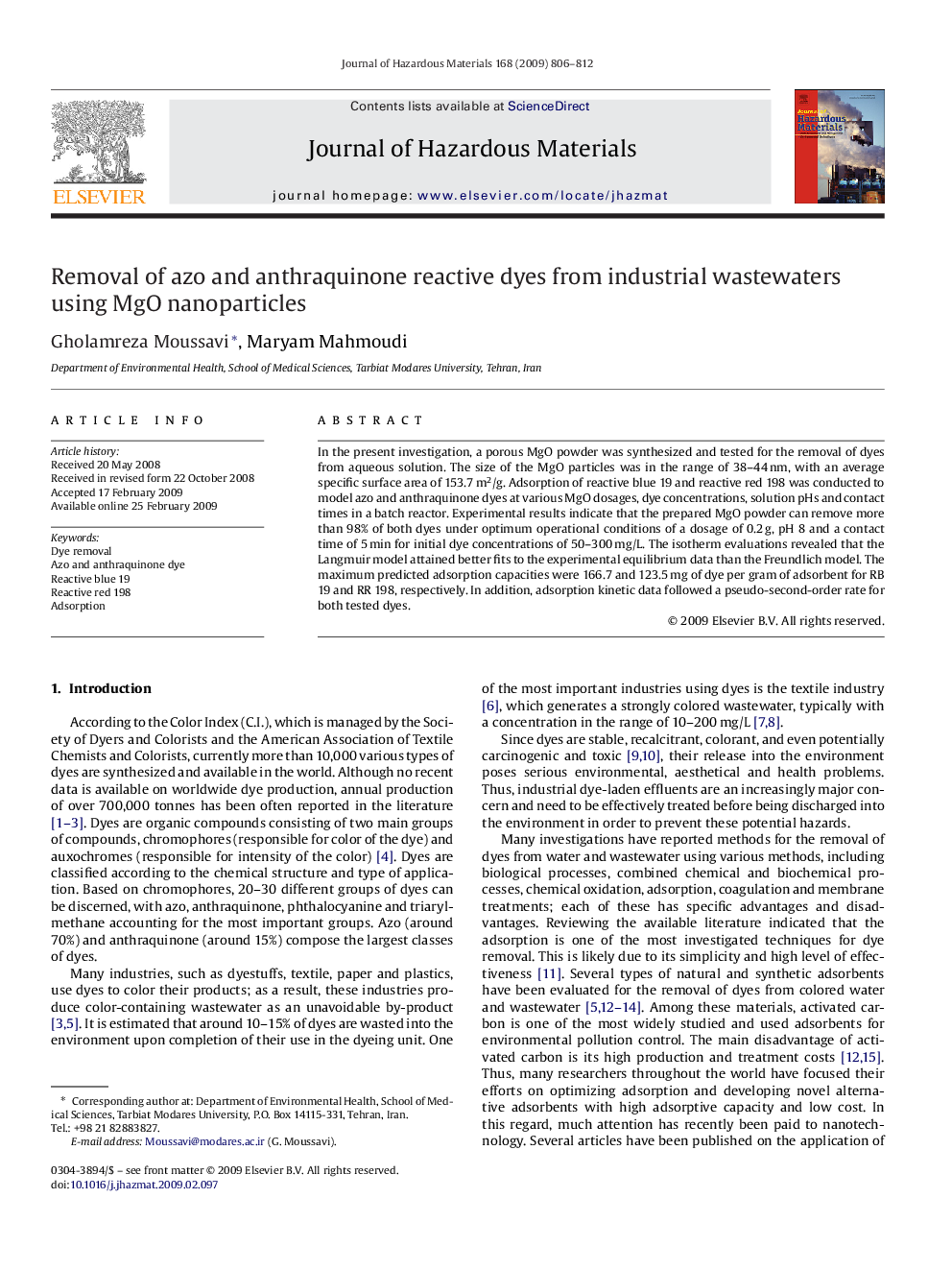| Article ID | Journal | Published Year | Pages | File Type |
|---|---|---|---|---|
| 581673 | Journal of Hazardous Materials | 2009 | 7 Pages |
Abstract
In the present investigation, a porous MgO powder was synthesized and tested for the removal of dyes from aqueous solution. The size of the MgO particles was in the range of 38-44Â nm, with an average specific surface area of 153.7Â m2/g. Adsorption of reactive blue 19 and reactive red 198 was conducted to model azo and anthraquinone dyes at various MgO dosages, dye concentrations, solution pHs and contact times in a batch reactor. Experimental results indicate that the prepared MgO powder can remove more than 98% of both dyes under optimum operational conditions of a dosage of 0.2Â g, pH 8 and a contact time of 5Â min for initial dye concentrations of 50-300Â mg/L. The isotherm evaluations revealed that the Langmuir model attained better fits to the experimental equilibrium data than the Freundlich model. The maximum predicted adsorption capacities were 166.7 and 123.5Â mg of dye per gram of adsorbent for RB 19 and RR 198, respectively. In addition, adsorption kinetic data followed a pseudo-second-order rate for both tested dyes.
Related Topics
Physical Sciences and Engineering
Chemical Engineering
Chemical Health and Safety
Authors
Gholamreza Moussavi, Maryam Mahmoudi,
